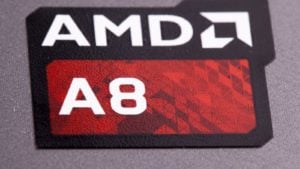It might only be a small crack in Advanced Micro Devices’ (NASDAQ:AMD) platinum-plated armor, but year-to-date through Feb. 3, AMD stock has a total return of -4.2%.
Long-time investors probably can’t remember the last time it’s started a year so slowly. The question is whether Chief Executive Officer Lisa Su should take the early correction as a sign to lighten her AMD holdings.

Not having written about AMD since December and October before that, I’ll admit my recent study of AMD’s situation is hardly thorough. And though I’ve been a fan of Su’s leadership since taking the helm in 2014, I have gotten more conservative in my most recent observations about the company.
In December, I suggested that even though the business remained strong, I felt investors would get a better entry point in the first half of 2021.
“AMD reports its Q4 2020 results at the end of January. They’re going to be rock-solid. For this reason, I think it’s got a shot to stay in triple digits for an extended period,” I wrote on Dec. 18.
“That said, if you don’t own AMD stock and are interested in buying, you might wait until you can get some in the $80 range. It’s bound to have a slump at some point in the first half of 2021.
“Long-term, I continue to like AMD.”
And I do like AMD as a long-term play.
However, since my Dec. 18 article was published, it’s lost about 8% of its value, double its YTD losses. Trading around $88 as I write this, I could see it falling into the low $80s, sooner rather than later.
Should Lisa Su sell some of her AMD stock?
If its valuation is a concern, I believe she should. Here’s why.
Should CEO Sell AMD Stock?
According to the company’s proxy materials, the CEO is required to own AMD stock worth “the lesser of (a) the number of shares equal to five times her base salary or (b) 350,000 shares.”
In 2019, Su’s salary was $1.03 million. Five times that amount would be $5.15 million. Based on $88, that’s 58,321 shares. That’s less than 350,000, so 58,321 is the minimum.
As of March 10, 2020, Su owned 6.37 million shares of AMD stock. According to her most recent Form 4 from December, Su was said to have owned just 2.71 million shares.
The difference between 6.37 and 2.71 million is too high. I’ll have to go back to the proxy materials to figure out the discrepancy. I did. If I had just scrolled down the page a little, I would have seen that this included 3.77 million shares exercisable by May 9, 2020.
One of the things found in the proxy materials is the option exercises and stock vested in the latest fiscal year. In 2019, Su realized $17.3 million from option awards and $36.6 million from stock awards for a total of $53.9 million.
I’d have to go through each of Form 4 in 2020 to figure out her exact number of shares held. For example, the CEO exercised 150,000 stock options on May 12, 2020, at $2.80 a share. She sold them for approximately $8.3 million and a pre-tax profit of $7.80 million [$55 less $2.80].
Suffice to say, Su’s been keeping her actual ownership levels around 2.7 million shares, almost eight times the 350,000 shares used for the CEO stock ownership guidelines.
Based on the fact she’s got several million shares left to vest between 2021 and 2026, she could sell some stock at this point and still have plenty down the road.
However, even if AMD stock fell by 50%, her 2.7 million shares held would still be worth almost $120 million.
The Valuation Argument for Selling
InvestorPlace’s Mark Hake gets my vote as IP’s biggest number cruncher. Hake recently called AMD overpriced for value investors at 49 times its 2021 earnings and more than 8.7 times sales.
He goes on to suggest that most analysts believe AMD is fully priced. However, according to MarketWatch, the 34 analysts covering the stock give it a 12-month target price of $102.46, which provides 16% upside as I write this.
That’s not 83%, AMD’s return over the past year, but it’s still a reasonable performance.
Overall, while it’s definitely not a value investor’s cup of tea, the analysts are mostly still keen on it — 17 buys, 2 overweight, 13 holds, and 2 sells — because of its contribution to the data center industry.
If you’re an investor who’s held for several years, it wouldn’t be a bad idea to take some profits off the table, especially if this little crack in AMD’s armor gets bigger.
As for Lisa Su, she’s set no matter what she does in 2021.
On the date of publication, Will Ashworth did not have (either directly or indirectly) any positions in the securities mentioned in this article.
Will Ashworth has written about investments full-time since 2008. Publications where he’s appeared include InvestorPlace, The Motley Fool Canada, Investopedia, Kiplinger, and several others in both the U.S. and Canada. He particularly enjoys creating model portfolios that stand the test of time. He lives in Halifax, Nova Scotia. At the time of this writing Will Ashworth did not hold a position in any of the aforementioned securities.
The Link LonkFebruary 09, 2021 at 12:27AM
https://ift.tt/3a2pzfg
It May Be Time for CEO Lisa Su -- And You -- To Take Profits on AMD Stock - Investorplace.com
https://ift.tt/2ZDueh5
AMD

No comments:
Post a Comment